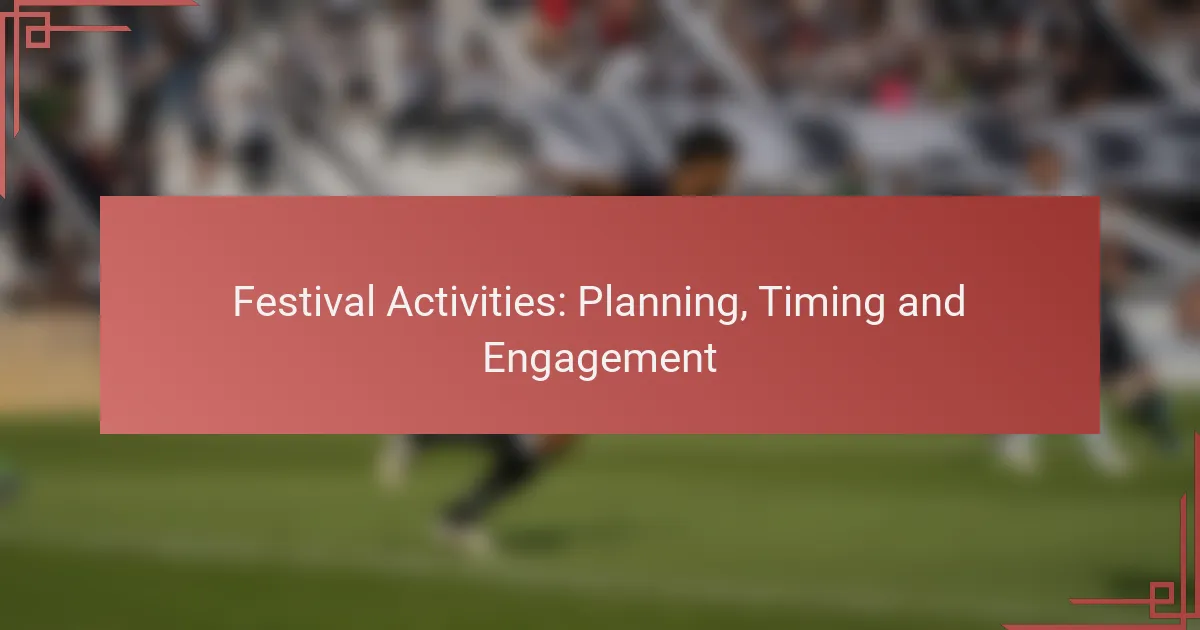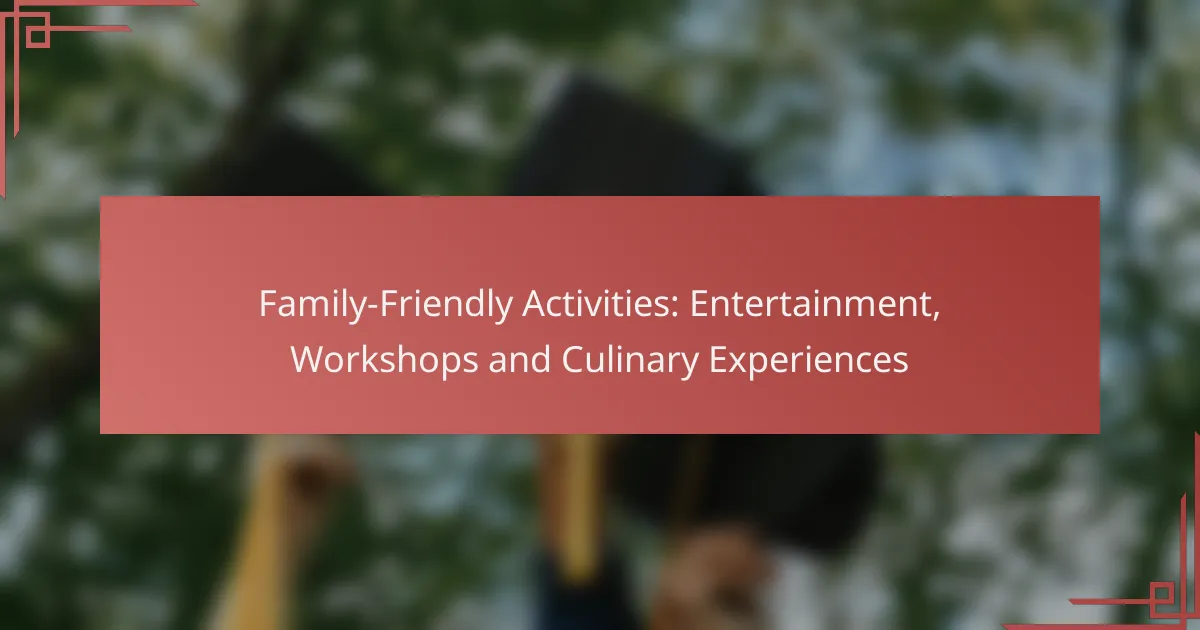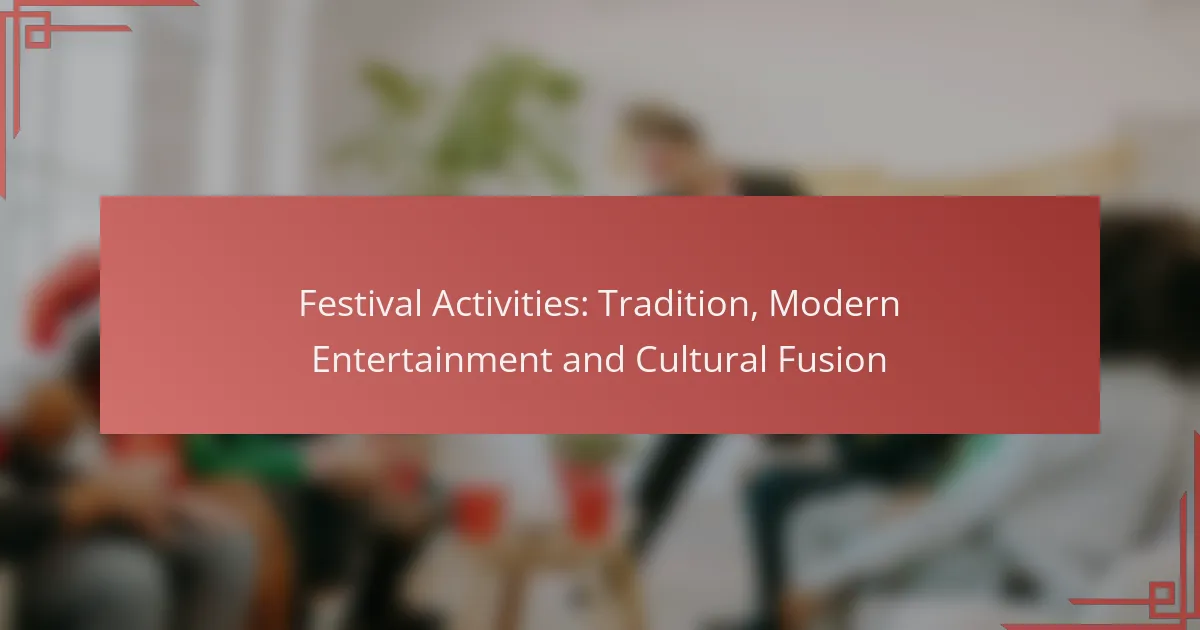Planning successful festival activities requires a keen understanding of your audience and careful consideration of timing and venue. Engaging experiences that promote participation can create a vibrant sense of community, while strategic scheduling and budget management are essential for a smooth event. By aligning activities with seasonal trends and local events, you can maximize attendance and ensure an enjoyable atmosphere for all attendees.
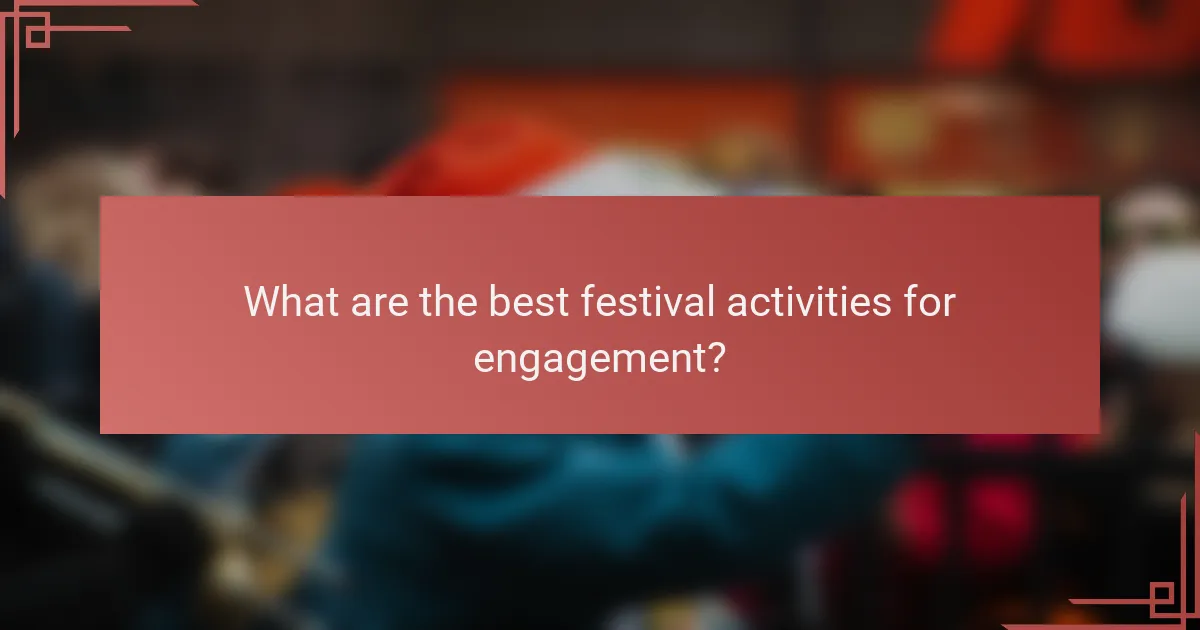
What are the best festival activities for engagement?
The best festival activities for engagement include interactive experiences that encourage participation and connection among attendees. These activities not only enhance enjoyment but also foster a sense of community and belonging.
Interactive workshops
Interactive workshops allow festival-goers to learn new skills while engaging with others. These sessions can cover a variety of topics, such as crafting, cooking, or dance, and typically last from one to three hours.
To maximize participation, consider offering workshops at different skill levels and times throughout the festival. Providing materials or kits can also enhance the experience, making it easier for attendees to join in.
Live performances
Live performances, including music, dance, and theater, are central to festival engagement. They create an energetic atmosphere and draw crowds, often featuring local artists to promote community talent.
Scheduling performances at various times throughout the day can keep the audience engaged. Consider incorporating different genres to appeal to a wider audience and enhance the overall festival experience.
Food and drink tastings
Food and drink tastings offer a delicious way to engage festival attendees. These activities can showcase local cuisine and beverages, providing a sensory experience that encourages social interaction.
Set up tasting stations with small samples to allow attendees to try a variety of options. Pairing tastings with educational components, such as chef demonstrations or mixology classes, can further enhance engagement.
Art installations
Art installations provide visual stimulation and can serve as interactive elements within the festival. These installations can range from large sculptures to immersive environments that invite exploration and participation.
Incorporating local artists to create site-specific works can deepen the connection to the community. Ensure that installations are accessible and encourage attendees to take photos or engage with the art to enhance their experience.
Community games
Community games foster friendly competition and collaboration among festival-goers. Activities like tug-of-war, scavenger hunts, or team challenges can engage participants of all ages and backgrounds.
Organizing games with clear rules and time limits can keep the energy high. Offering small prizes or recognition for winners can motivate participation and create memorable experiences for attendees.
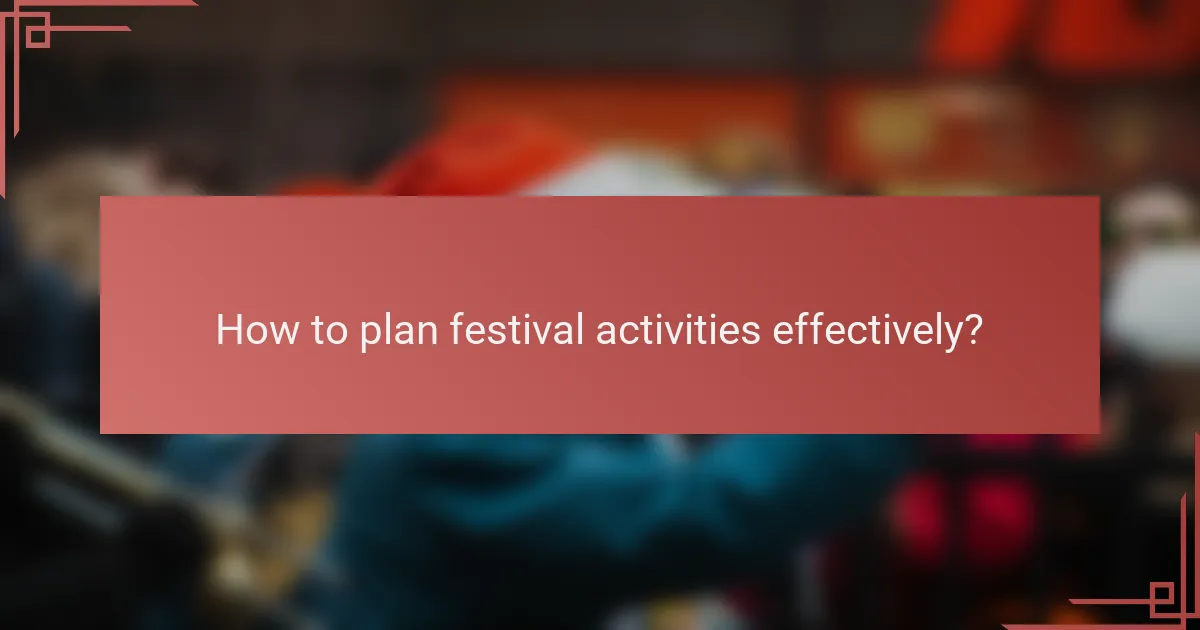
How to plan festival activities effectively?
Effective festival activity planning involves understanding your audience, managing your budget, selecting the right venue, and strategically scheduling events. These elements ensure that the festival is engaging, enjoyable, and runs smoothly.
Define target audience
Identifying your target audience is crucial for tailoring activities that resonate with attendees. Consider demographics such as age, interests, and cultural backgrounds to create a festival experience that appeals to them.
For example, a family-friendly festival may include children’s activities and educational workshops, while a music festival might focus on popular bands and nightlife. Conduct surveys or analyze past attendance data to refine your understanding of who will attend.
Set budget parameters
Establishing a clear budget is essential for effective planning. Outline all potential expenses, including venue rental, permits, staffing, marketing, and equipment. This will help you allocate funds appropriately and avoid overspending.
Consider setting aside a contingency fund of around 10-15% of your total budget to cover unexpected costs. Regularly review your budget as planning progresses to ensure you remain on track.
Choose a suitable venue
Selecting the right venue can significantly impact the festival’s success. Consider factors such as location, capacity, accessibility, and available facilities. A central location with good transport links can attract more attendees.
Evaluate venues based on their suitability for the planned activities. For instance, outdoor spaces may be ideal for large crowds and performances, while indoor venues might be better for workshops and smaller gatherings. Always check for necessary permits and regulations specific to the location.
Schedule activities strategically
Strategic scheduling of activities enhances attendee engagement and flow throughout the festival. Create a timeline that balances popular events with quieter periods to prevent overcrowding and ensure a smooth experience.
Consider using a mix of headlining acts and local talent to maintain interest. Additionally, provide clear signage and schedules to help attendees navigate the festival easily. Avoid overlapping major events to maximize participation in each activity.
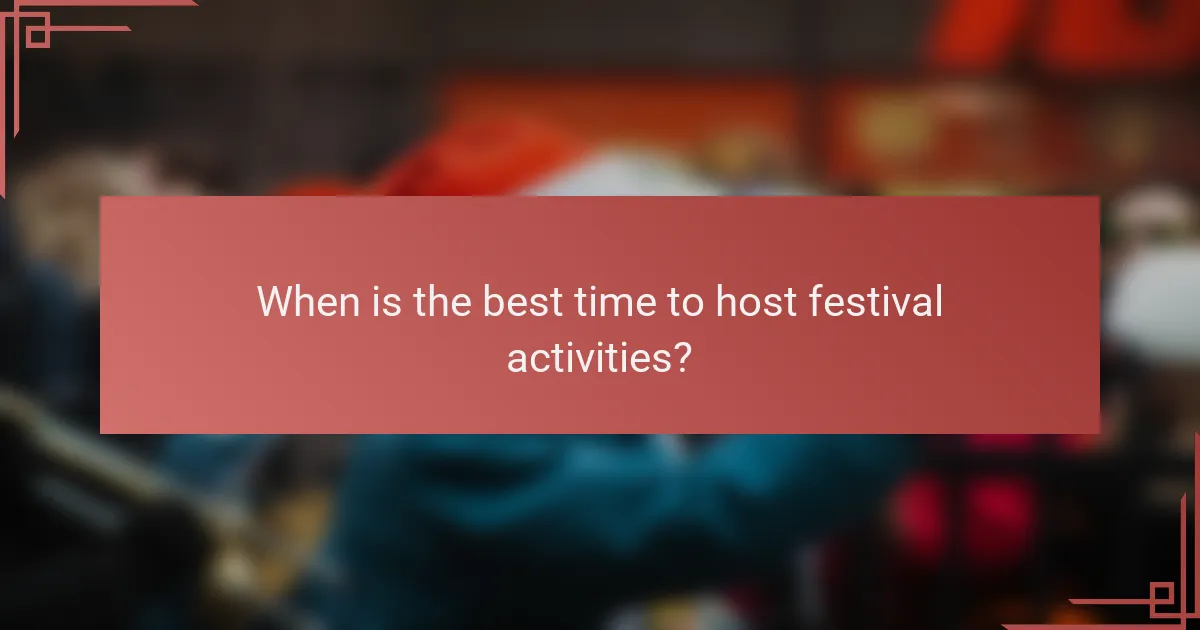
When is the best time to host festival activities?
The best time to host festival activities typically depends on the season, local events, and weather conditions. Planning around these factors can enhance attendance and engagement, ensuring a successful event.
Seasonal considerations
Seasonal factors play a crucial role in determining the timing of festival activities. Spring and summer are often preferred due to milder weather and longer daylight hours, which can encourage outdoor participation. However, fall festivals can attract crowds with seasonal themes and harvest celebrations.
Consider local traditions and holidays when selecting a season. For instance, hosting a festival during a national holiday can increase visibility and participation.
Local event calendars
Reviewing local event calendars is essential for successful festival planning. Avoid scheduling conflicts with major events, such as sports games or other festivals, which could dilute attendance. Instead, aim for dates that complement existing events to maximize community engagement.
Check local tourism websites or community boards for upcoming events. This research can help you identify optimal dates and even potential partnerships with other organizers.
Weather patterns
Weather patterns significantly impact festival activities, especially for outdoor events. Research historical weather data for your chosen date to anticipate conditions like rain or extreme heat. Aim for periods with a lower likelihood of adverse weather to ensure a pleasant experience for attendees.
Consider having contingency plans in place, such as tents for shade or rain cover, to protect against unexpected weather changes. This preparation can help maintain a positive atmosphere and keep participants engaged regardless of conditions.
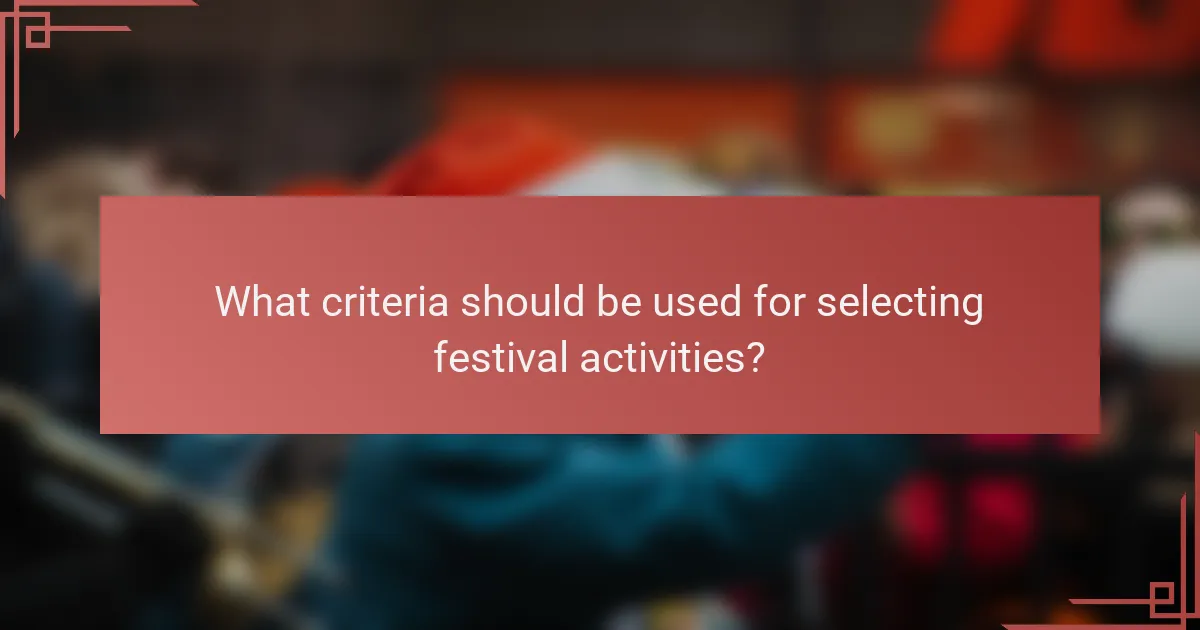
What criteria should be used for selecting festival activities?
Selecting festival activities requires careful consideration of audience interests, available resources, and compliance with safety regulations. These criteria ensure that the activities are engaging, feasible, and safe for all participants.
Audience interest alignment
Understanding the interests of your target audience is crucial for selecting festival activities. Conduct surveys or focus groups to gather insights on preferences, age demographics, and cultural backgrounds. Activities should resonate with attendees to maximize engagement and participation.
For example, a music festival might include genres that appeal to the majority of attendees, while a food festival could feature local cuisine that reflects the community’s tastes. Tailoring activities to audience interests can significantly enhance the overall experience.
Resource availability
Resource availability encompasses budget, personnel, and equipment necessary for the festival activities. Assess your budget to determine which activities are financially viable, and ensure you have enough staff or volunteers to manage them effectively.
Consider the logistics of each activity, such as space requirements and equipment needs. For instance, a large-scale interactive installation may require more resources than a simple craft booth. Prioritize activities that align with your available resources to avoid overextending your capabilities.
Safety regulations
Adhering to safety regulations is essential when planning festival activities. Familiarize yourself with local laws and guidelines that govern public events, including crowd control measures, health protocols, and emergency procedures.
For example, if your festival includes food vendors, ensure they comply with health and safety standards to prevent foodborne illnesses. Additionally, consider implementing measures such as first aid stations and clear emergency exits to enhance safety for all attendees.
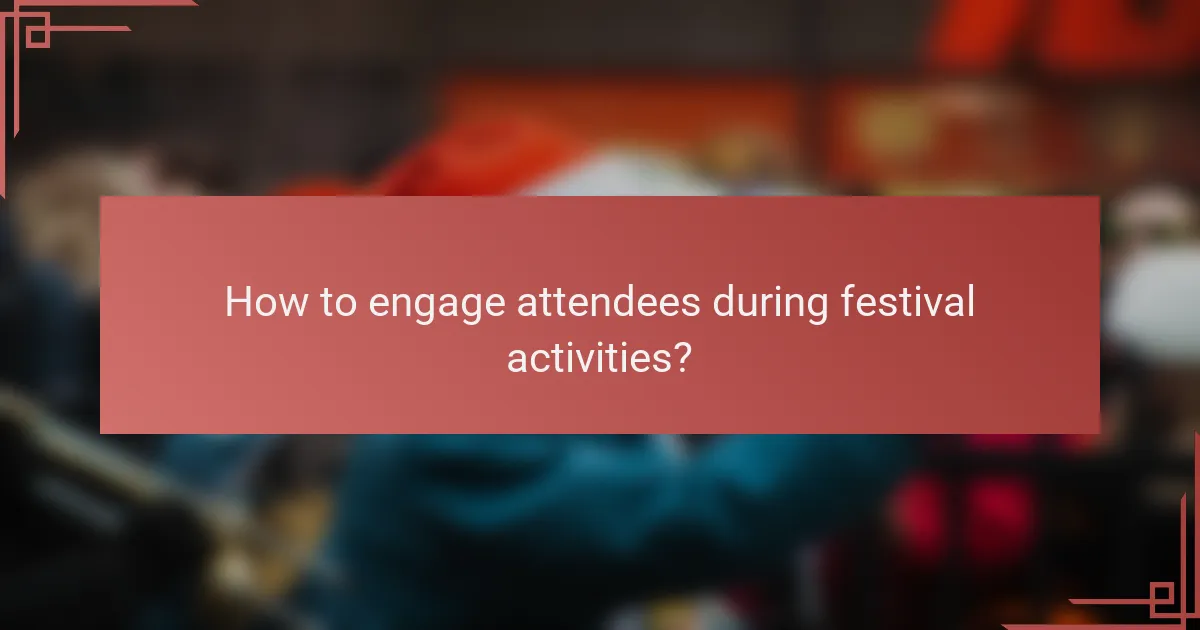
How to engage attendees during festival activities?
Engaging attendees during festival activities is crucial for creating memorable experiences and fostering community. Effective engagement strategies include utilizing social media, incorporating gamification, and offering incentives and rewards to encourage participation.
Utilize social media
Social media is a powerful tool for engaging festival attendees before, during, and after the event. Create event-specific hashtags to encourage attendees to share their experiences, photos, and feedback in real-time. This not only boosts visibility but also fosters a sense of community among participants.
Consider live streaming key activities or performances on platforms like Instagram or Facebook to reach a wider audience. Engaging with attendees through polls, contests, or Q&A sessions can also enhance interaction and keep the excitement alive throughout the festival.
Incorporate gamification
Gamification involves adding game-like elements to festival activities to increase engagement. This can include scavenger hunts, challenges, or interactive booths where attendees can earn points or badges for participation. Such activities encourage attendees to explore the festival and interact with various attractions.
To implement gamification effectively, ensure that the rules are clear and that rewards are appealing. For example, offering small prizes or recognition for completing challenges can motivate attendees to participate more actively.
Offer incentives and rewards
Incentives and rewards can significantly boost attendee engagement at festivals. Consider offering discounts on future events, exclusive merchandise, or entry into a raffle for participants who engage in specific activities. This not only encourages participation but also enhances the overall festival experience.
When designing your incentive program, make sure the rewards are relevant and desirable to your audience. For instance, if your festival targets families, offering kid-friendly prizes or experiences can increase participation among younger attendees.
